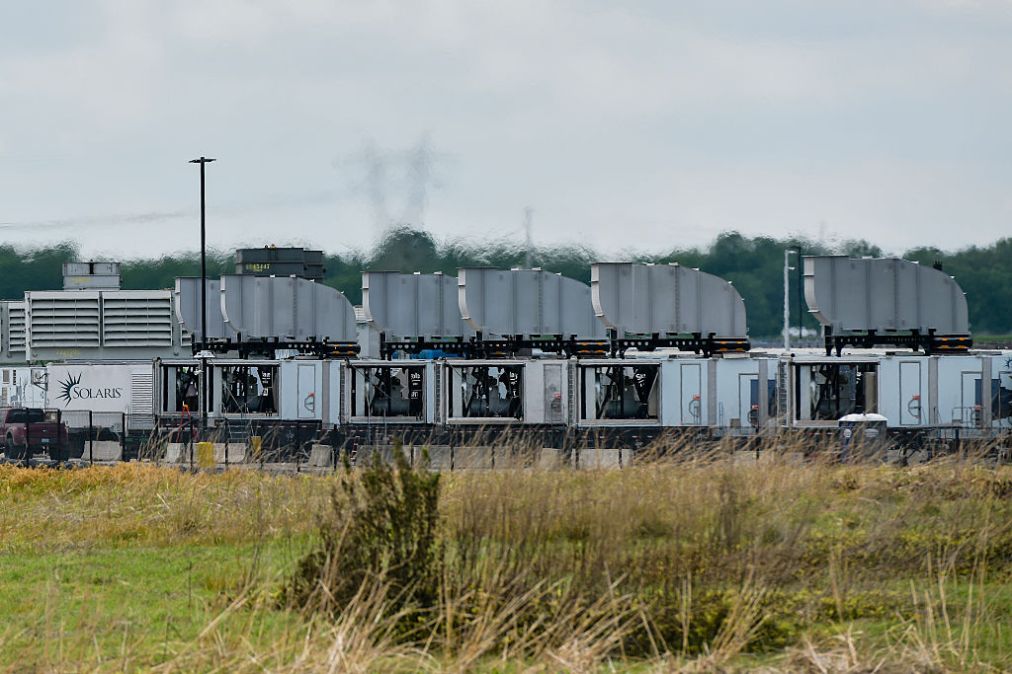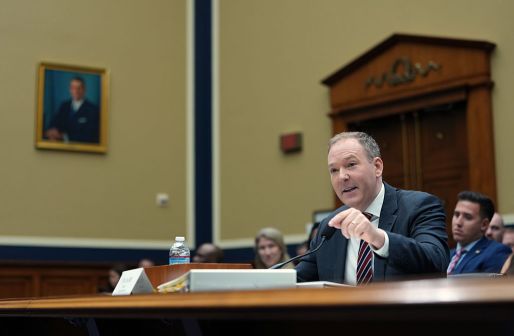Energy agenda for Trump AI plan: Build data centers, cut clean air, water regulations

Expanded energy capacity via streamlined permitting and pared-down environmental regulations will be critical to ensuring “America’s path to AI dominance,” the White House said in its new administrative blueprint for the technology.
Released Wednesday, President Donald Trump’s AI Action Plan leans heavily into the buildout of data centers and other new infrastructure to support the country’s artificial intelligence ambitions, framing “new sources of energy” as the way to “power it all.”
But leveraging energy in the way the White House envisions is only possible through overhauling the U.S. environmental permitting system and targeting other regulations, the document states. The plan touts Trump’s pullback of National Environmental Policy Act regulations “across almost every relevant Federal agency” and the administration’s creation of the National Energy Dominance Council.
The 28-page plan delivers seven energy-related policy recommendations to align with Trump’s vision, covering everything from new category exclusions for data centers under NEPA to making federal lands available for data center construction.
To build new data centers, the plan offers recommendations that seek to alter a nationwide Clean Water Act permit so that it “does not require a Pre-Construction Notification and covers development sites consistent with the size of a modern AI data center.”
And to expedite environmental permitting more broadly, the plan calls for reduced regulations under the Clean Water Act, the Clean Air Act, and the Comprehensive Environmental Response, Compensation, and Liability Act, as well as any “related laws.”
The targeting of clean air and water regulations in the name of data-center construction drew strong rebukes from environmental and consumer groups Wednesday. During a virtual event hosted by Sen. Ed Markey, the Massachusetts Democrat said Trump’s plan “wants to create loopholes so big in our federal environmental laws that you could actually build a hyperscale data center inside of them.”
“I heard from people across the country … whose stories make clear [that] unregulated, uncontrolled data-center development is sucking our communities dry, taking our water to cool their computers and giving it back to us, polluted with chemicals,” Markey said. “[They’re] taking our money through higher energy bills and local taxes in order to pay for their incessant hunger for electric power and taking our ability to breathe fresh air as gas plants and diesel generators get built alongside these massive facilities.
“It doesn’t have to be this way,” the senator added. “Our environment doesn’t have to be a sacrificial lamb on the altar of innovation.”
Sara Enright, senior director of safety and sustainability at Consumer Reports, said in a statement that a “responsible technology industry” would aim for growth that “prioritizes the environment and rights of local communities.”
“The Clean Air Act and the Clean Water Act have been in place since the early 1970s, protecting Americans’ public health and welfare by balancing industrial growth with protecting clean air and water,” Enright said. “We see no compelling reason to give data centers a free pass from these important protections.”
Josh T. Smith, energy policy lead at the Abundance Institute and a visiting fellow at the Conservative Coalition for Climate Solutions (C3), said in an interview with FedScoop that it’s important to “make sure that we’re not letting companies get away with anything.” But the “environmental tradeoffs” in the plan will likely be “short term,” and the plan overall “get[s] it right” by “making it easier to build more, to build quickly, and then to use the existing system we have more efficiently.”
To match the White House’s data-center aims, the plan notes that the U.S. electric grid “will need to be upgraded,” calling it “the lifeblood of the modern economy and a cornerstone of national security.” A comprehensive strategy to “enhance and expand” the power grid for “continued strength and capacity” is a must, the plan argues.
Under the grid section of the plan, the Trump administration makes four policy recommendations: stabilize as much of the current grid as possible; optimize existing grid resources; prioritize the interconnection of reliable power sources while embracing new energy generation sources; and create a blueprint to navigate the 21st century energy landscape.
Smith said he was surprised to not see any mentions in the plan for off-grid data centers, which he said can supply additional options by giving operators the ability to spurn the local utility and work directly with another energy provider. But the rest of the grid-related elements of Trump’s plan hit “all the right notes.”
“The grid management technologies that are listed in there, that’s about using the system more efficiently,” Smith said. The same goes for “the flexibility component inherent in, say, the discussion of using backup power systems as their AI stuff rolls out.”
How the administration ultimately decides to expand the grid and accelerate construction on data centers remains to be seen, but environmental and consumer advocates appearing at Sen. Markey’s virtual event expressed concerns not only about what the plan will mean for clean air and water in communities across the country, but also who will pay the tab.
Tyson Slocum, director of Public Citizen’s energy program, made the case that the seven major artificial intelligence developers in this country and the private equity-backed data centers that are running generative AI supercomputers “have the financial resources to pay their fair share and not socialize their costs and force higher utility bills onto working Americans.”
“President Trump, on the campaign trail, promised that within a year, he would reduce all Americans’ utility bills. He would cut utility bills in half,” Slocum said. “He has gone back on that promise because his AI plan is going to raise utility bills and raise our reliance on natural gas as a fuel source.”






